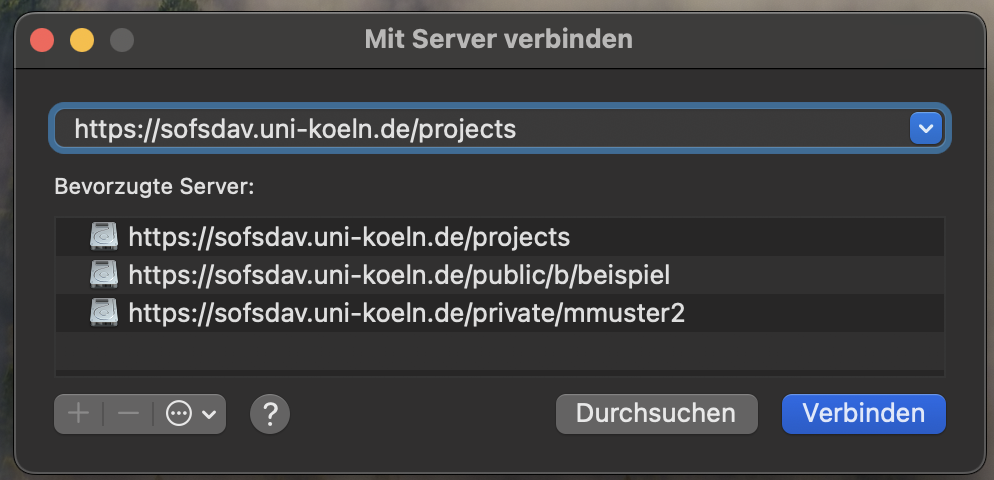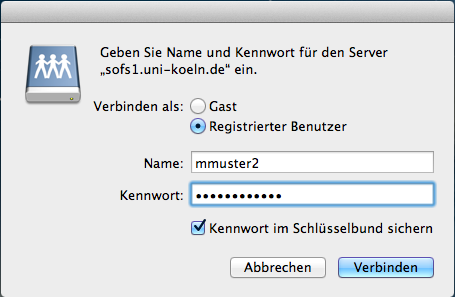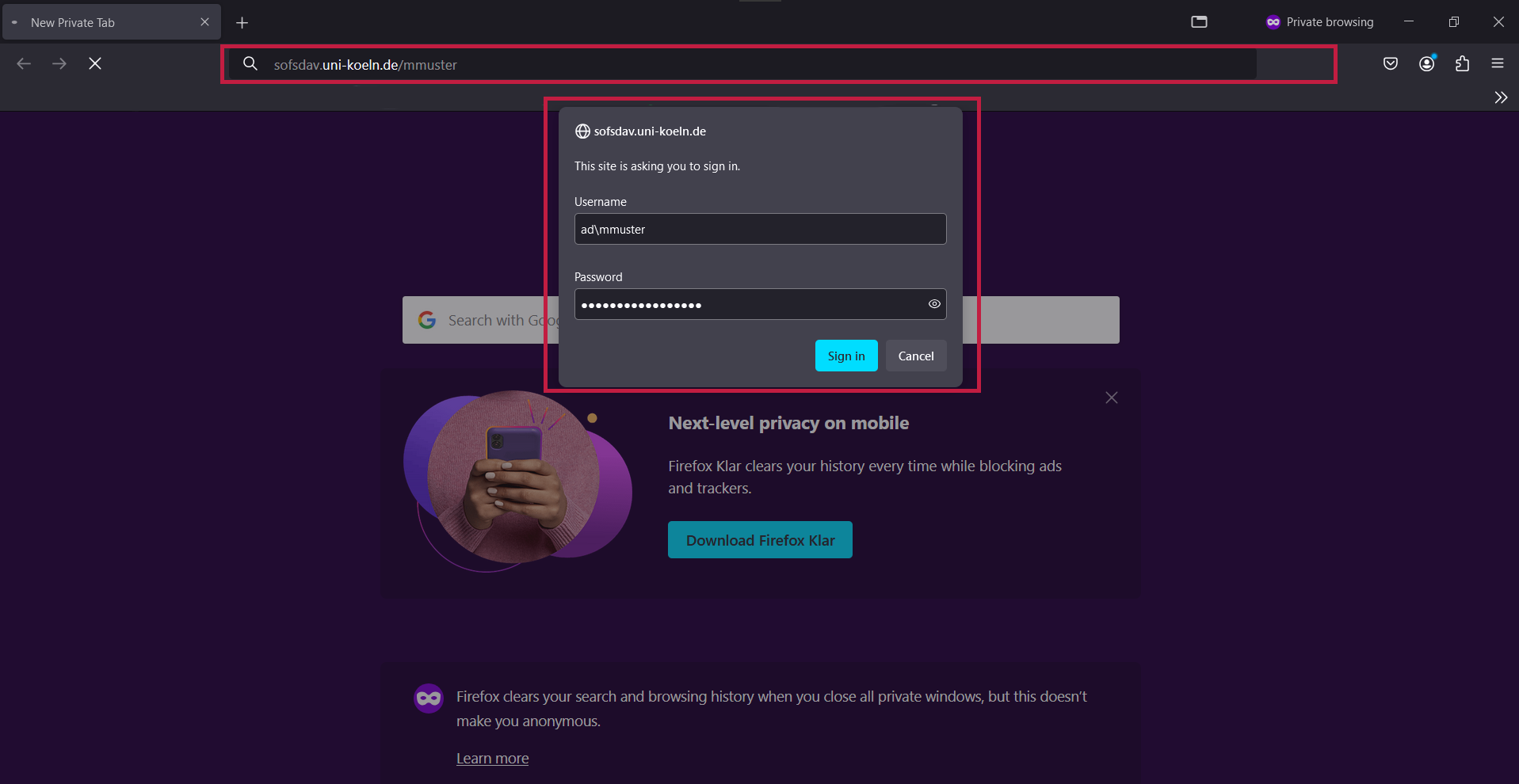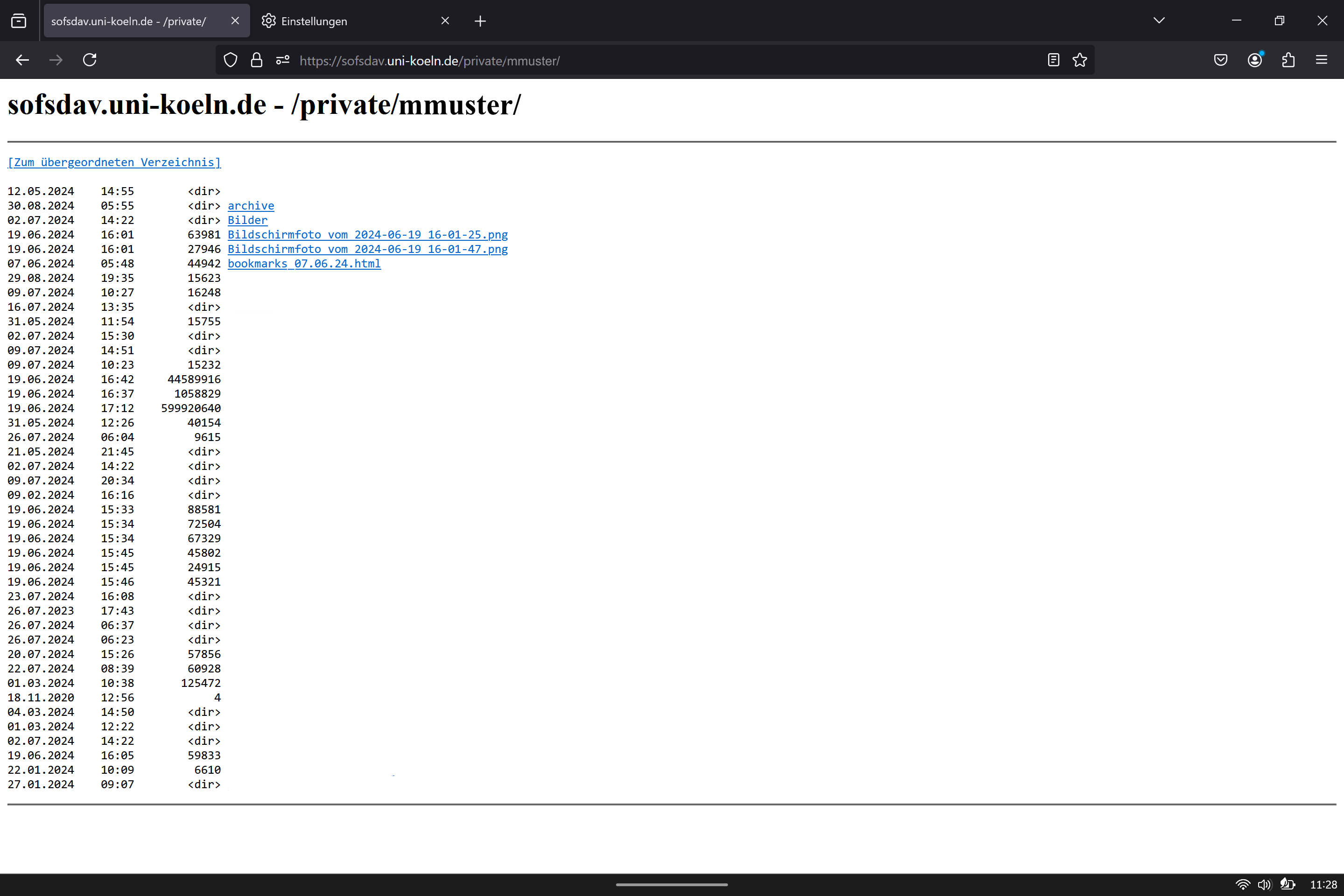Alternative access methods
Access via WebDAV
Attention: Access via WebDAV always leads to problems and is not recommended for everyday use of SoFS. It is rather a help for situations in which you need to access documents (read) quickly, but access via CIFS/SMB is not possible.
Setting up SoFS via WebDAV under Windows 11
A connection to the UKLAN (via eduroam, LAN or VPN) is required to connect to a SoFS drive in this way.
- Open Windows Explorer by clicking on the folder icon at the bottom of the taskbar. Tip: Alternatively, you can also press Windows key+E on the keyboard to open the Explorer. Now right-click on the “This PC” tab in the left-hand column and then click on the “Add network address” entry [Fig. 1].
- In the wizard, click on “Next” [Fig. 2] and then on “Select a user-defined network address” [Fig. 3].
- Under “Internet or network address”, enter the path of the folder you want to access [Fig. 4]. Use the following scheme as a guide:
- The private drive is located at https://sofsdav.uni-koeln.de/private/accountname
- The public drive is located at https://sofsdav.uni-koeln.de/public/anfangsbuchstabe of the accountname/accountname
- You will receive paths for institutional drives from your institution (usually https://sofsdav.uni-koeln.de/projects/bezeichnung)
- Then click on Next [Image 4].
- Enter your user data in the form “ad\accountname” with the corresponding password. The connection is then established [Fig. 5].
- Finalize the setup and enter a name for the network address [Fig. 6].
- You will now receive a success message. If you check the box “Open this network address after clicking ‘Finish’, it will be opened automatically [Fig. 7].
- You will now find the network address under the “This PC” tab [Fig. 8].
You can find detailed instructions for setting up under Windows 10 here.
SoFS via WebDAV under MacOS
The prerequisite for using CIFS is that the computer is located in the University of Cologne network. This applies to stationary devices (Mac Pro, iMac, Mac mini) in the institutes and facilities on campus or Macs that have previously established a VPN connection to the university network.
- To establish a connection to the SoFS, open the Finder. In the Go to menu, click on Connect to server (alternatively, you can also use the keyboard shortcut ⌘ + K (command key and K)).
- Enter the WebDAV address of the SoFS server in the Server address field. If you have previously worked with CIFS, please note that the WebDAV addresses differ significantly in some places and subtly in others from those of CIFS:
- For a “Private” directory:
https://sofsdav.uni-koeln.de/private/[account name - For a “public” directory:
https://sofsdav.uni-koeln.de/public/[first letter of account name]/[account name] - For the projects directories:
https://sofsdav.uni-koeln.de/projects/[path to the SoFS area of the facility]
- For a “Private” directory:
- Enter a server address according to the above scheme and replace the placeholders in square brackets with the account name of your student or staff account. You can use the “+” button to save an address once it has been entered so that you can retrieve it directly from the list in future.
- Click on the Connect button.
- Enter the user name and password of your student or staff account in the login window. (Logging in as a guest will not work).
Whether you check or uncheck Save password in keychain depends on the level of security you are aiming for. If the password entry was correct, a window with the content of the selected area is now displayed in the Finder. If you enter an incorrect user name or password, you will see the typical “head-shaking window”. - To terminate the connection to the SoFS once you have finished your work, click on the eject symbol next to the server name in the Finder (marked with a red arrow in the adjacent illustration).
SoFS via WebDAV under Linux/Ubuntu
- Open the file manager in Ubuntu and click on “Other Locations”.
- In the lower bar (“Connect to Server”) you can enter a network path. Enter the corresponding SoFS path there:
- personal private area: davs://sofsdav.uni-koeln.de/private/[username]
- personal public area: davs://sofsdav.uni-koeln.de/public/[first letter of account name]/[account name]
- For institutions: davs://sofsdav.uni-koeln.de/projects/[path to the SoFS area of the institution] | davs://sofsdav.uni-koeln.de/[path to the SoFS area of the institution].
- The login screen will now appear. Please enter your user name (without AD\) and the corresponding password. Finally, click on “Connect” to complete the process.
Access the SoFS storage via web browser
The data in the SoFS can also be accessed using any web browser (e.g. Firefox, Chrome, Safari, Internet Explorer, Opera). This means that it is possible to retrieve data stored in the SoFS with practically any Internet-enabled device (e.g. from an Internet café). However, you only have read-only access to the files, which means that no new folders can be created or files uploaded in this way. A connection to the UKLAN (VPN, eduroam, LAN) is necessary to successfully access to the data storage.
The use is shown in the images (see below) using Firefox as an example. With other browsers, however, it works in exactly the same way.
- Enter the address of the desired area in the address bar. Make sure you also enter the letter “S” for https [Fig. 1]. The addresses are:
- For the “Private” areas:https://sofsdav.uni-koeln.de/private/[account name] => Example: https://sofsdav.uni-koeln.de/private/mmuster2
- For the “Public” areas: https://sofsdav.uni-koeln.de/public/[first letter of account name]/[account name] => Example: https://sofsdav.uni-koeln.de/public/m/mmuster2
- For the SoFS areas for institutions: https://sofsdav.uni-koeln.de/projects/[name of the SoFS area] or https://sofsdav.uni-koeln.de/[name of the SoFS area].
- You will be prompted to enter your user name and password. Add the suffix “AD\” in front of the user name of your student or staff account [Image 1] Example: If your user name is mmuster2, enter the following in the user name field: AD\mmuster2. Take particular care to enter the character “\” correctly. On most keyboards with a German layout, you can get it with the key combination AltGr+ß. On the Mac, however, the key combination Shift+Option+7 is common. (The Option key is also called the Alt key).
Contact
If you have any questions or problems, please contact the ITCC-Helpdesk















